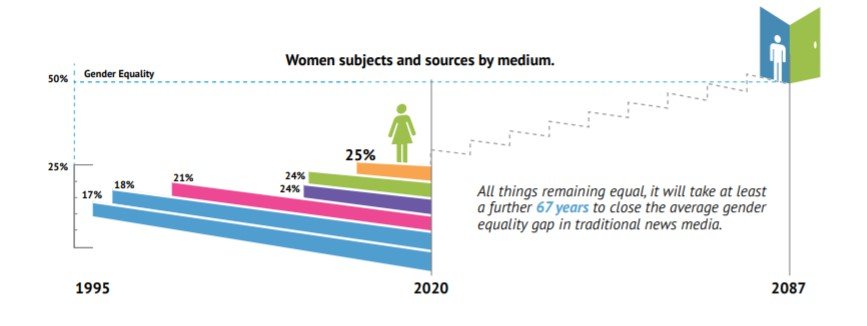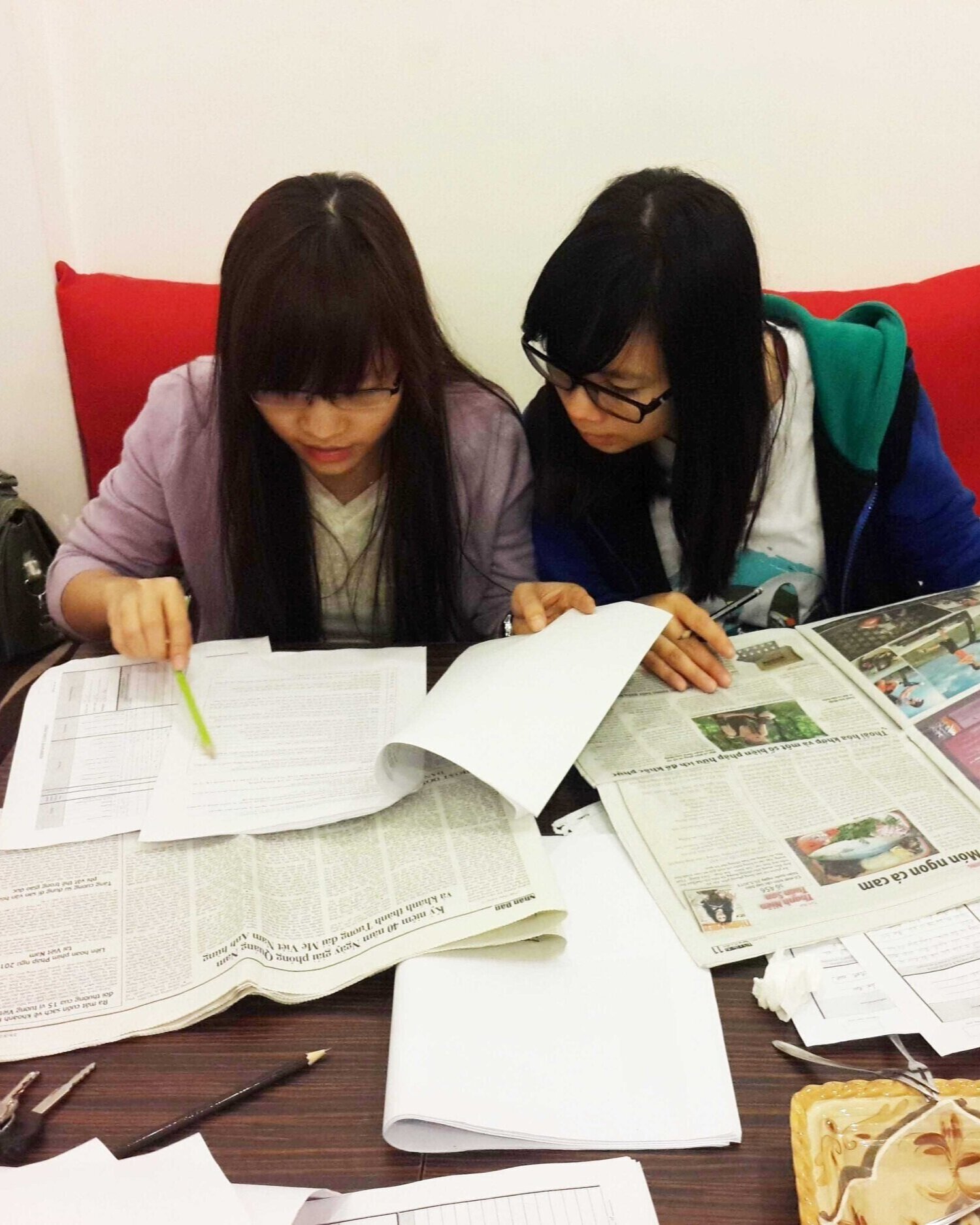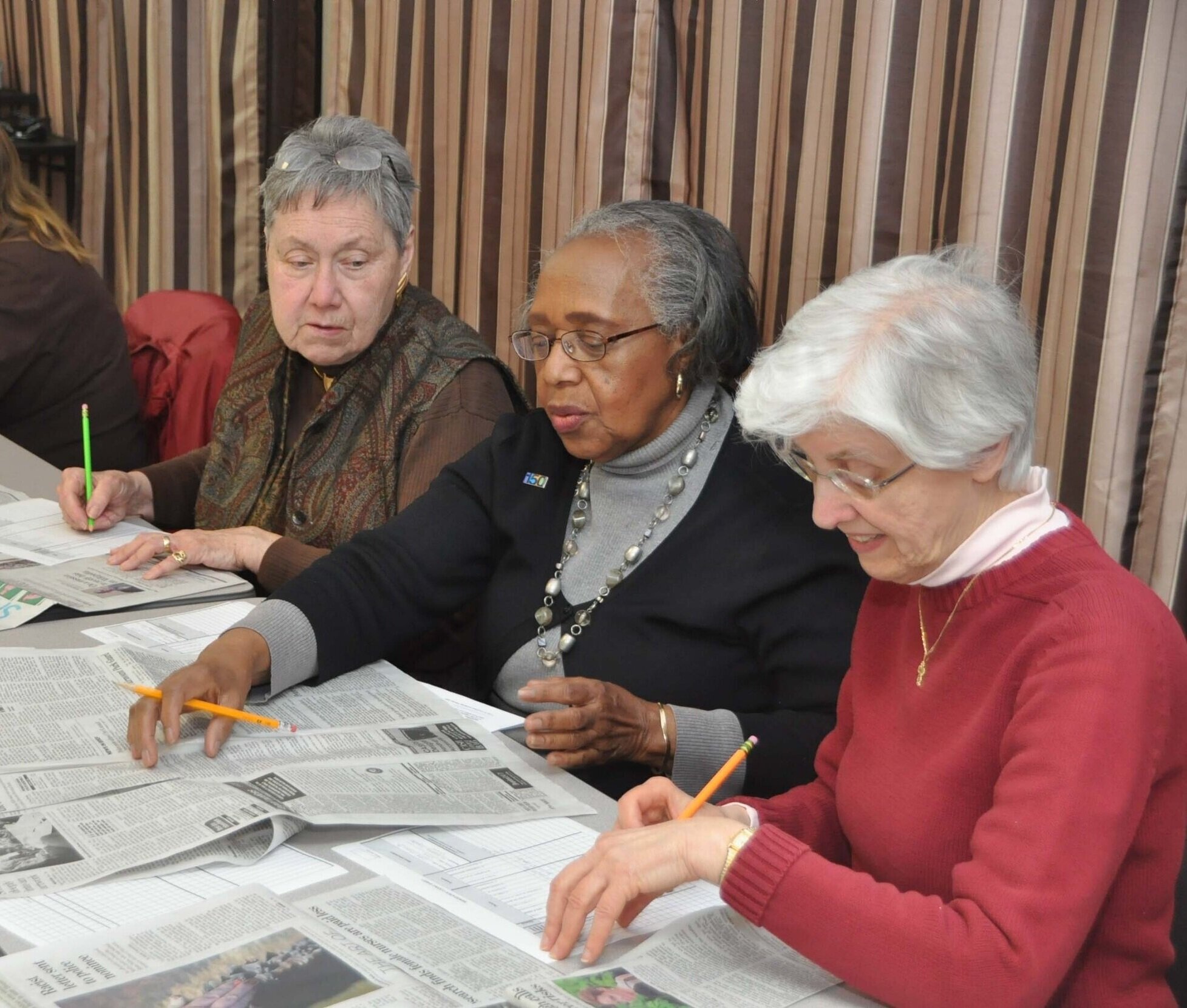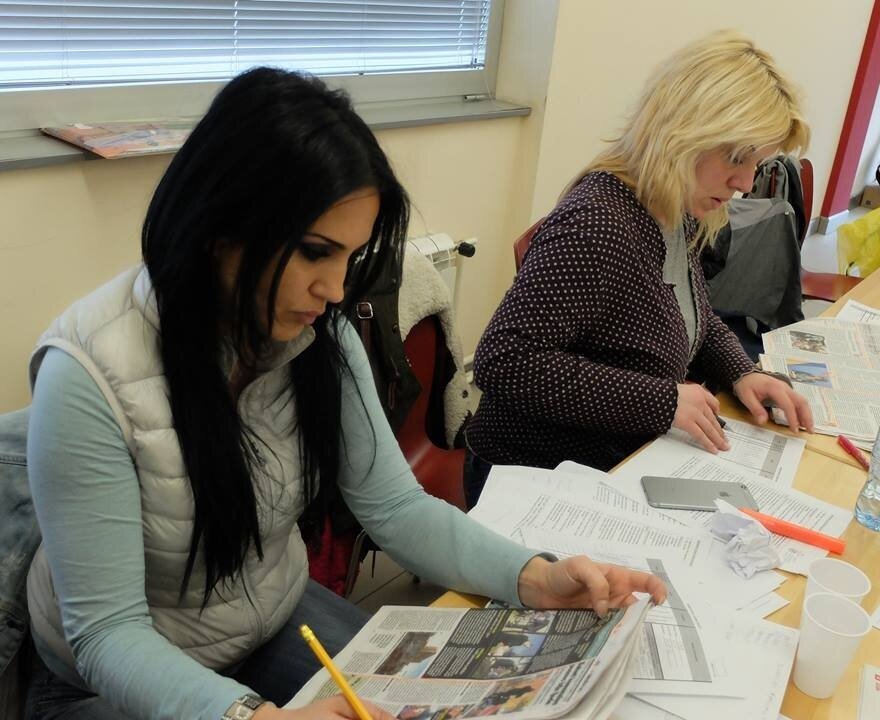The Problem
Women represent just one quarter of people featured in our news — with little change in 25 years
By Sarah Macharia
Global Coordinator, Global Media Monitoring Project
Every five years the Global Media Monitoring Project (GMMP), a volunteer network of activists, researchers, students, and media professionals, takes the pulse of gender in news, measuring women’s presence, portrayal, and representation on a global scale.
The GMMP is the largest and longest-running research and advocacy initiative for gender equality in and through the news media. The focus is on the news rather than other media genres in view that news should be factual and bound by agreed standards of professionalism, such as accuracy, balance, truthfulness, and objectivity.
In 1995, GMMP research in print and broadcast news media in 71 countries found that only 17% of news subjects — that is, people seen, heard or read about — were women. Twenty-five years later that figure showed little improvement, at only 25%.
Figure 1. Gender inequality in the news 1995-2020
The findings were disheartening yet remarkable in their consistency across the 25 years from 1995 to 2020. In 2020, the year of the most recent study, GMMP monitored 30,172 stories in print, radio, television, Internet and Twitter news in 2,251 news outlets across 116 countries. The study found that women were only 25% of the persons heard, read about or seen in newspaper, television and radio news. This increased from 24% in 2015.
The needle towards parity has moved by only 8 percentage points in 25 years and increased only 4 percentage points since 2005. (Figure 1.) If the news were truly a mirror of the world, we would expect to see at least an equal gender share of voices in content. Yet, at this rate, it will take 67 years to reach numerical gender parity.
Who are the 25%?
For the women that make up the 25% of people heard, read about or seen in the news media, how are they portrayed and what type of news are they associated with?
When you dig deeper into the data, disaggregated not just by gender but by news topic, and the roles (typologies) of the persons speaking, the disparity in women’s representation becomes even more problematic. When women are present in the news they appear primarily as sources based on their personal experience or as popular opinion providers and eyewitnesses to events. (Table 1.) When you consider subject matter experts as sources, as of 2020, women represent just 24%, but still a significant rise from the 19% found between 2005-2015.
|
Function in the news |
Female |
Male |
|---|---|---|
|
Personal Experience |
42% |
58% |
|
Popular Opinion |
38% |
62% |
|
Eyewitness |
30% |
70% |
|
Subject of the story |
24% |
76% |
|
Spokesperson |
22% |
78% |
|
Expert or commentator |
24% |
76% |
Table 1. GMMP 2020. Typology of news subjects and sources by sex
Typology of persons featured in the news:
Personal experience: The person provides opinion or comment based on individual personal experience; the opinion is not necessarily meant to reflect the views of a wider group.
Popular opinion: The person's opinion is assumed to reflect that of the 'ordinary citizen' (e.g., in a street interview, vox populi, etc.); it is implied that the person's point of view is shared by a wider group of people.
Eyewitness: The person gives testimony or comment, based on direct observation (e.g. being present at an event).
Subject of the story: The story is about this person, or about something the person has done or said.
Spokesperson: The person represents or speaks on behalf of another person, a group or an organisation.
Expert or commentator: The person provides additional information, opinion or comment, based on specialist knowledge or expertise.
GMMP 2020 – Media Coverage amid COVID-19
The 2020 GMMP report analyzed gender in media coverage amid a global health crisis. This year’s report had the largest number of participating countries ever, and roughly 25% of stories in the sample were related to the pandemic. To accommodate the shift in media focus and avoid a skew in distribution, the findings were coded to capture secondary topics for stories related to COVID-19. Read the methodology used in the 2020 GMMP here.
Coverage of the pandemic caused the number of science and health news to jump significantly in 2020, but visibility of women in the category decreased by 5 points, reversing progress seen in previous reports. The presence of women as subjects, sources and journalists in COVID-19 related stories was higher than in non-pandemic related stories. Though, the content itself was four points less likely to focus on women, raising issues of gender equality or inequality and challenging existing gender stereotypes. Women’s presence as sources were greater in pandemic stories, even crossing the gender parity line on radio with 55% giving popular opinion and 52% providing testimony based on personal experience. Still, women only represented 27% of the health specialists in coronavirus stories, which does not reflect the global average of women health specialists in the physical world (46%).
Certain topics experienced major media underrepresentation due to the pandemic. This year’s report included a new category called “Gender & Related” to highlight gender-specific stories on issues such as sexual harassment against women, sexual assault, #MeToo, and other forms of gender violence such as feminicide, trafficking of girls and women; and inequality between women and men. However, only 1% of stories in the findings were coded under this category, revealing a severe lack of accountability to and respect for women from the news media during COVID-19. This lack of representation was also noted when studying presence of news subjects and sources of women from minority and historically marginalized groups, and when reviewing gendered ageism in the news.
When you measure women's representation by major news topics, you find that the news topics in which women are most visible are the topics where there is the least coverage. The gender gap is widest in news about politics and government, a topic that occupies the largest share of news space at just over 25%. In 2020, women were most visible in news on social and legal, and science and health topics, and least present in political and economic news, topics that command greater broadcast airtime and print news space (Table 2).
|
Major topic |
Female |
Male |
|---|---|---|
|
Politics and Government |
20% |
80% |
|
Economy |
24% |
76% |
|
Science and Health |
30% |
70% |
|
Social and Legal |
32% |
68% |
|
Crime and Violence |
24% |
76% |
|
Celebrity, Arts and Media, Sports |
25% |
75% |
Table 2. GMMP 2020. Ratio of women to men featured in the news by major news topic.
Gender inequality in news media content appears in various other ways:
Women reporters face inequality in newspaper bylines and newscast reports. Following stagnation between 2005 and 2015, women’s visibility as reporters and journalists has increased by three percentage points overall across print and broadcast news.
Only 3% of stories challenged gender stereotypes, which decreased by one point since 2015. Media gender stereotypes are caricatures of femininity and masculinity in portrayals of women and men respectively, for instance, depictions of hypersexualized women and macho masculine men. In 2020, women are still seen, and their physical attributes described more than their voices are heard in the news. Within the major topics, the largest change was in science and health news where 5% of stories challenged gender stereotypes compared to only 1% in 2005 (during COVID this percentage dropped back to 1%).
Women’s relative invisibility in traditional news media had crossed over into digital news delivery platforms: Only 26% of the people in Internet news stories and media news tweets combined are women.
Regional statistics
North American news has the highest percentage of experts who are women (38%) followed by the Pacific (33%) and the Caribbean (29%). (Table 3.) The number of women experts in news in Asia increased from 10% to 19% since 2015. In Latin America and the Pacific regions, women are almost equally as likely as men to be interviewed based on personal experience. In North America, only 1 out of 4 popular opinion providers in the news are women (25%).
Looking again at the news by topic, the 2020 GMMP found the gender gap in political stories to be narrowest in the Pacific and widest in the Middle East followed by the Asia. Women's visibility in economic news stories was greatest in North America, at 36% of people in the stories, and least in Africa, at 19%. For both science/health and crime/violence major topics, the highest gender gap was recorded in Middle Eastern news.
Table 3. GMMP 2020. Ratio of women to men by source typology, by region.
Table 4. GMMP 2020. Ratio of women to men featured as subjects and sources in print, radio and television news by major topic per region
* Gender & Related stories represent only 1% of total sample.
Arguments for gender equality in the news media
1. Equal representation is a matter of journalistic ethics and professionalism
While structural forces within and outside the newsroom contribute to how women and men are represented in content, ultimately the journalists, reporters, and editors choose who to interview and how to portray them as well as the tone and angle of the narrative. Media sexism – inaccurate reporting of issues that more often affect women such as violence against women and reproductive rights, denial of voice, and the proliferation of sexualized images – harms women and gender minorities, complicates their struggles and constrains efforts to correct gender inequalities in economic, political, social and cultural life.
Media organisations the world over have established ethics codes and standards for the conduct of journalists containing at least one prescription not to discriminate based on gender. For instance, the Principles on Conduct of Journalists adopted by the International Federation of Journalists (IFJ) more than four decades ago states:
“ The journalist shall be aware of the danger of discrimination being furthered by the media and shall do the utmost to avoid facilitating such discrimination based on, among other things, race, sex, sexual orientation, language, religion, political or other opinions, and national or social origins”. (IFJ, 1954)
The reality, however, has been far from exemplary as the GMMP has discovered through its systematic watch of the news media in more than 100 countries since 1995.
Source: 2015 GMMP monitoring activities in Vietnam, photo credit: GMMP
2. Gender parity in the news is important to freedom of expression
The marginalization of women’s voices in the news denies women the right to freedom of expression enshrined in Article 19 of the Universal Declaration of Human Rights, articulated as the right to “hold opinion without interference, to seek, receive and impart information and ideas through any media.” (OAS, Joint Declaration, 2010). Almost one decade ago, the UN special rapporteurs on freedom of expression underscored discrimination as one of the ten key challenges to freedom of expression, citing women’s and other historically marginalized groups’ “struggle to have their voices heard and to access information of relevance to them” (La Rue, F., M. Haraszti, C. Botero and F. Tlakula, 2010). Yet, debates on freedom of expression today remain limited to media freedom and fail to consider how this concept applies to broader media audiences.
Source: 2015 GMMP monitoring activities by the United Methodist Church, USA. photo credit: GMMP
3. Gender parity is important to the continued relevance of our news media
Gender discriminatory media practice narrows the participation space available for women and gender minorities whose issues and voices have systemically been excluded from the conversations. Public engagement in these communities with serious stories is happening increasingly outside mainstream news media, in alternative and new media spaces that respond to their news needs. These are spaces in which audiences can hear others like them, see their perspectives validated and issues important to them discussed.
To quote Divina Frau-Meigs, “Journalism as a profession runs the risk of being cut out of the media value chain if public interest and freedom of expression are not brought into the equation.” (UNESCO/WSIS Report 2013)
Source: 2015 GMMP monitoring activities in Serbia. photo credit: GMMP
4. The news media play a role in achieving global development goals
Media are implicated in the achievement of the gender equality aspirations in the post-2015 development agenda in as far as their role in maintaining the social and cultural norms underpinning discrimination and inequality is concerned. For instance, removal of social barriers to the empowerment of girls and women (Agenda 2030 Declaration, para 8), or elimination of gender violence (para 20) would be constrained by media content that channels negative gender stereotypes, belittles, degrades and sexualizes women, and normalizes gender violence and gender power inequalities.
GMMP findings across the period between 1995 and 2020 indicate that the slow progress being made to advance women’s communication rights, encompassing the right to fair and balanced portrayal, to voice in and access to media, is in danger of coming to a halt, or even reversal, if remedial actions are not taken.










